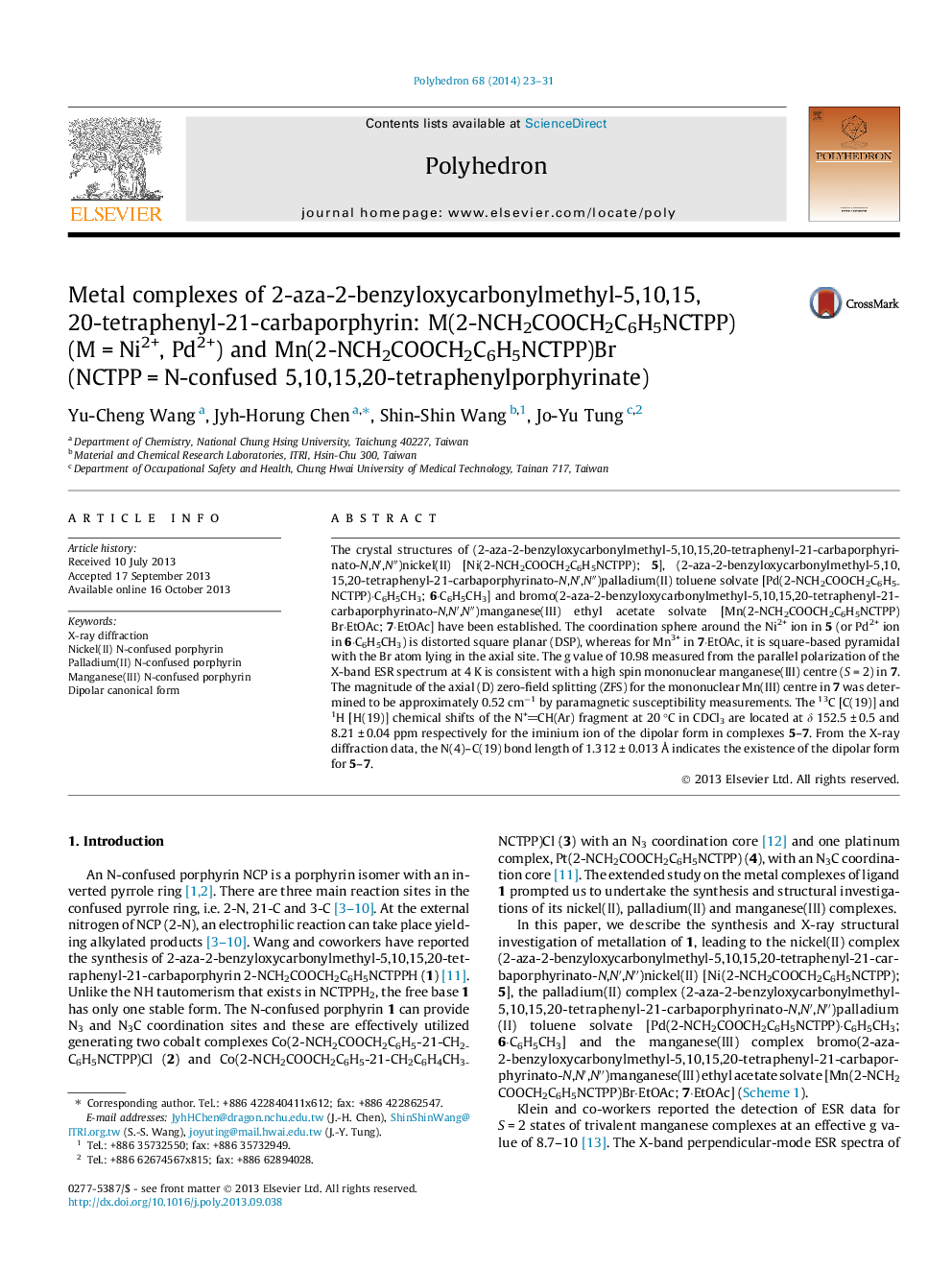| Article ID | Journal | Published Year | Pages | File Type |
|---|---|---|---|---|
| 1336581 | Polyhedron | 2014 | 9 Pages |
The crystal structures of (2-aza-2-benzyloxycarbonylmethyl-5,10,15,20-tetraphenyl-21-carbaporphyrinato-N,N′,N″)nickel(II) [Ni(2-NCH2COOCH2C6H5NCTPP); 5], (2-aza-2-benzyloxycarbonylmethyl-5,10,15,20-tetraphenyl-21-carbaporphyrinato-N,N′,N″)palladium(II) toluene solvate [Pd(2-NCH2COOCH2C6H5NCTPP)·C6H5CH3; 6·C6H5CH3] and bromo(2-aza-2-benzyloxycarbonylmethyl-5,10,15,20-tetraphenyl-21-carbaporphyrinato-N,N′,N″)manganese(III) ethyl acetate solvate [Mn(2-NCH2COOCH2C6H5NCTPP)Br·EtOAc; 7·EtOAc] have been established. The coordination sphere around the Ni2+ ion in 5 (or Pd2+ ion in 6·C6H5CH3) is distorted square planar (DSP), whereas for Mn3+ in 7·EtOAc, it is square-based pyramidal with the Br atom lying in the axial site. The g value of 10.98 measured from the parallel polarization of the X-band ESR spectrum at 4 K is consistent with a high spin mononuclear manganese(III) centre (S = 2) in 7. The magnitude of the axial (D) zero-field splitting (ZFS) for the mononuclear Mn(III) centre in 7 was determined to be approximately 0.52 cm−1 by paramagnetic susceptibility measurements. The 13C [C(19)] and 1H [H(19)] chemical shifts of the N+CH(Ar) fragment at 20 °C in CDCl3 are located at δ 152.5 ± 0.5 and 8.21 ± 0.04 ppm respectively for the iminium ion of the dipolar form in complexes 5–7. From the X-ray diffraction data, the N(4)–C(19) bond length of 1.312 ± 0.013 Å indicates the existence of the dipolar form for 5–7.
Graphical abstractTwo diamagnetic, Ni(II) (5) and Pd(II) (6), and one paramagnetic complex, Mn(III) (7), of an N-confused porphyrin have been synthesized and characterized.Figure optionsDownload full-size imageDownload as PowerPoint slide
